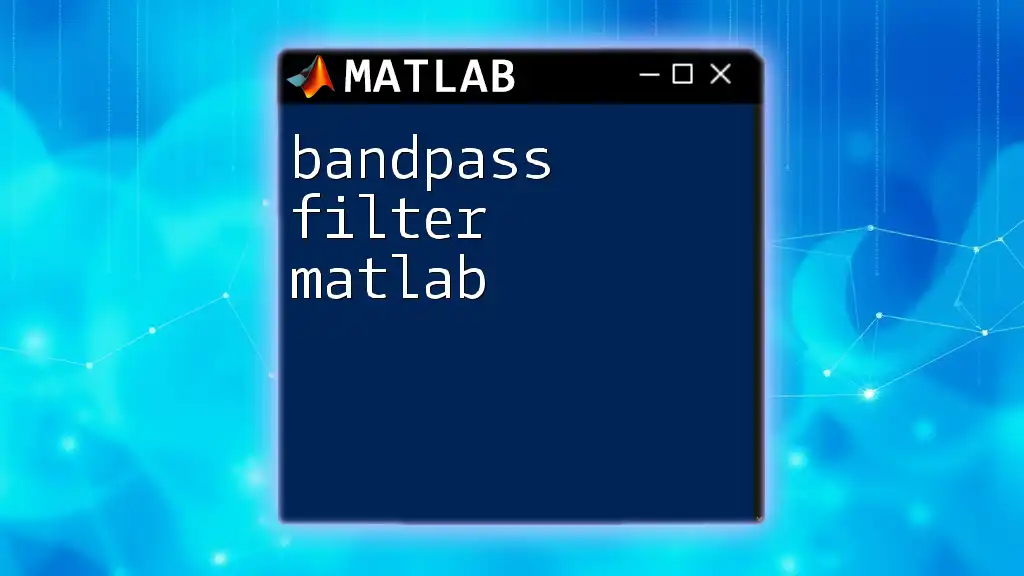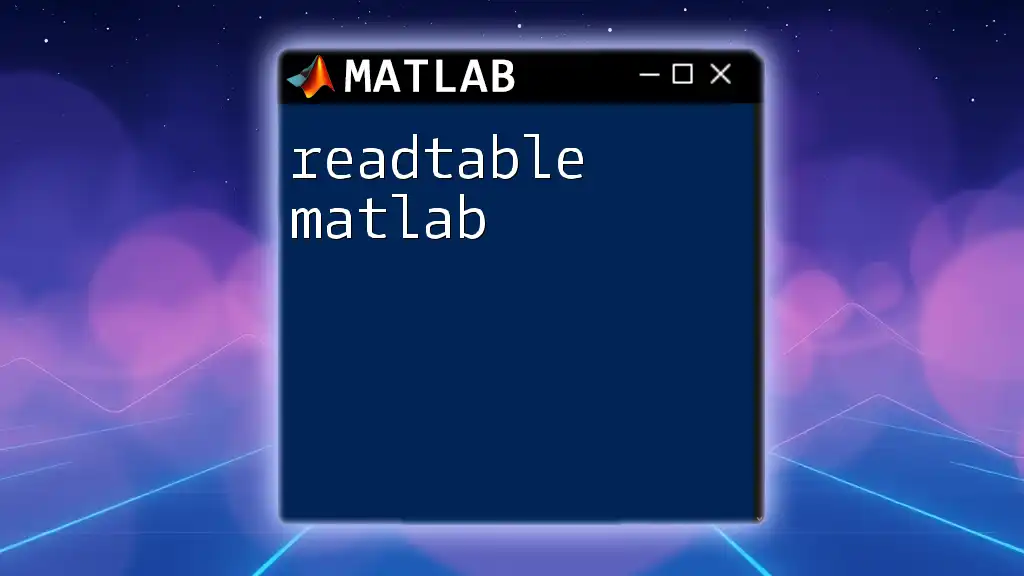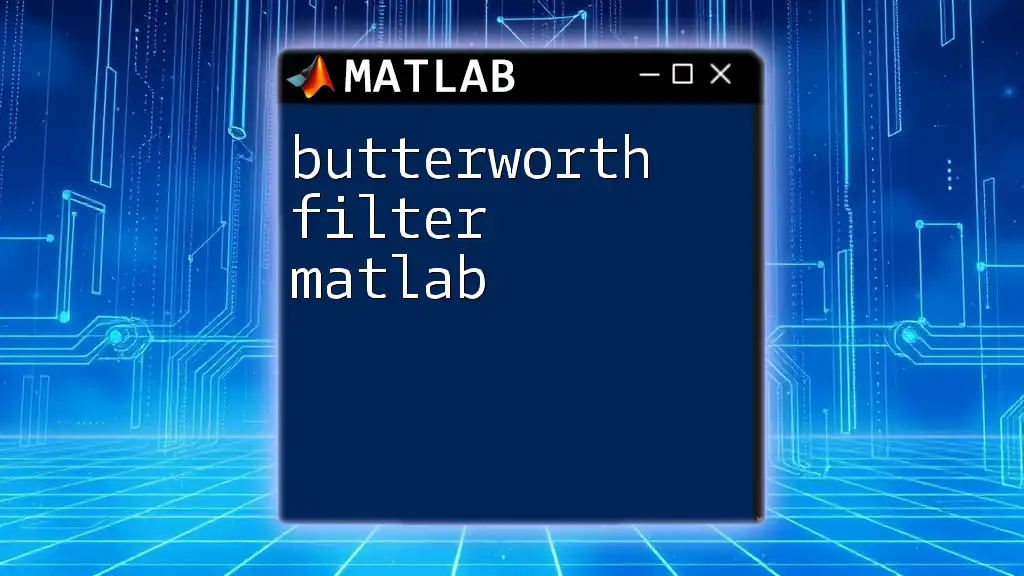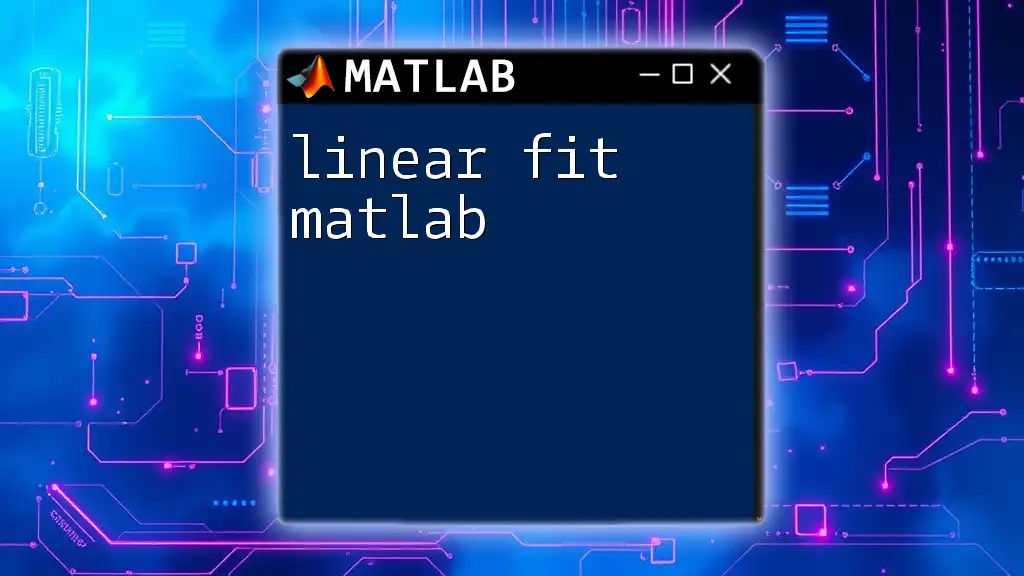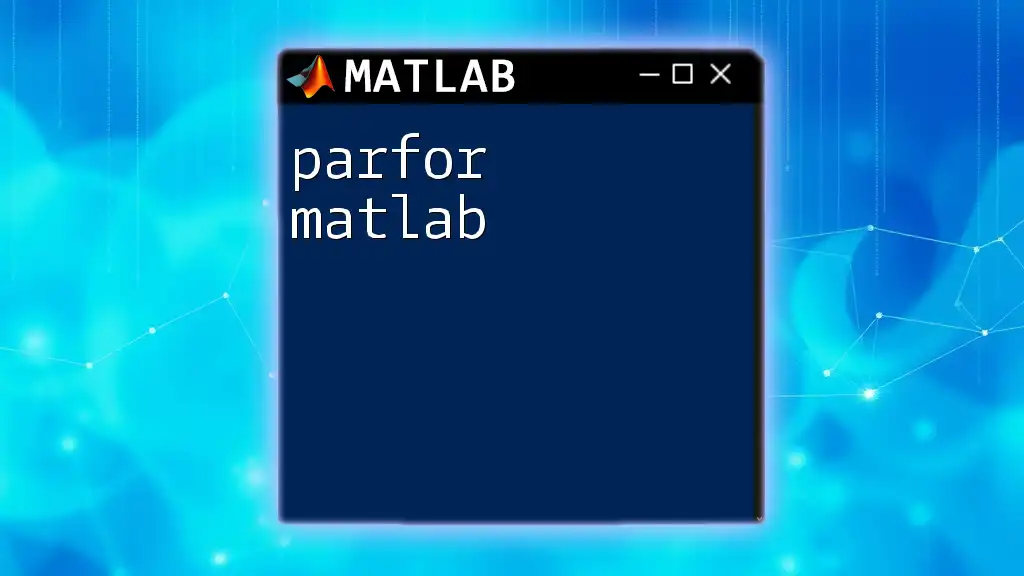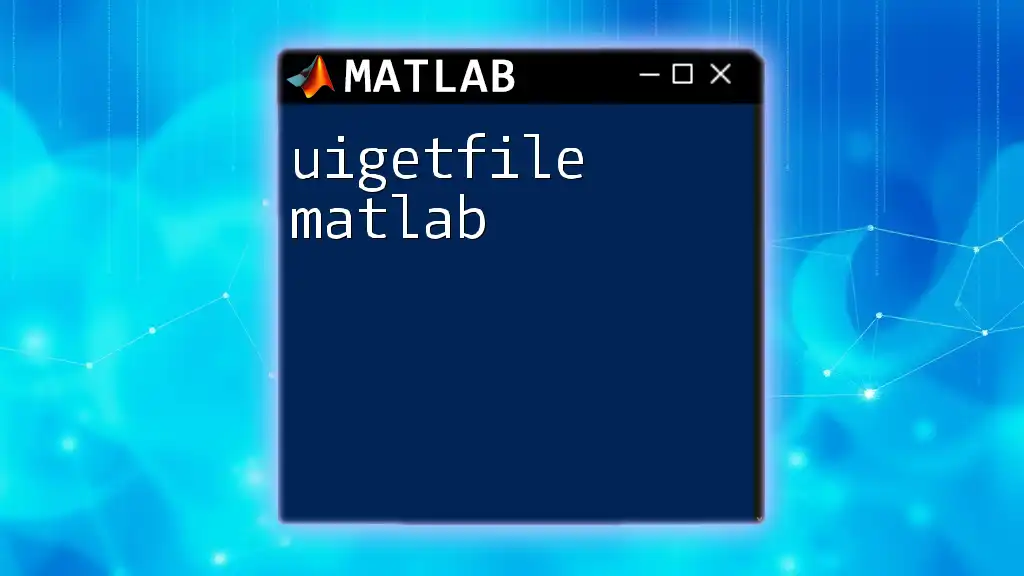A bandpass filter in MATLAB is used to allow signals within a certain frequency range to pass through while attenuating frequencies outside that range; here’s a simple example of how to design a bandpass filter using the `designfilt` function:
fpass = [500 1500]; % Passband frequencies [low high]
bpFilt = designfilt('bandpassfir', 'FilterOrder', 20, 'CutoffFrequency', fpass, 'SampleRate', 5000);
Understanding Bandpass Filters
Characteristics of Bandpass Filters
A bandpass filter is a device or algorithm that allows frequencies within a certain range to pass while attenuating frequencies outside that range. Understanding the characteristics of bandpass filters is imperative for effective application in fields like signal processing.
Frequency Response
The frequency response of a bandpass filter is defined by its cutoff frequencies:
- Lower cutoff frequency (f_low): The frequency below which signals are attenuated.
- Upper cutoff frequency (f_high): The frequency above which signals are also gradually attenuated.
Types of Bandpass Filters
There are different types of bandpass filters, classified primarily by their design methods:
- Digital vs. Analog Filters: Digital filters operate on digitized signals, while analog filters process continuous signals.
- IIR vs. FIR Filters: IIR (Infinite Impulse Response) filters use feedback, allowing them to achieve sharper frequency responses with fewer coefficients. FIR (Finite Impulse Response) filters are stable by design and can reach linear phase responses but tend to require more coefficients.
Applications of Bandpass Filters
Bandpass filters have extensive applications across multiple domains:
- Audio Processing: Used to selectively allow certain frequency ranges, improving sound quality and isolating instruments.
- Biomedical Signal Processing: Essential in ECG and EEG analysis for extracting relevant physiological signals.
- Communication Systems: Employed in radio and data transmission for eliminating noise and interference.
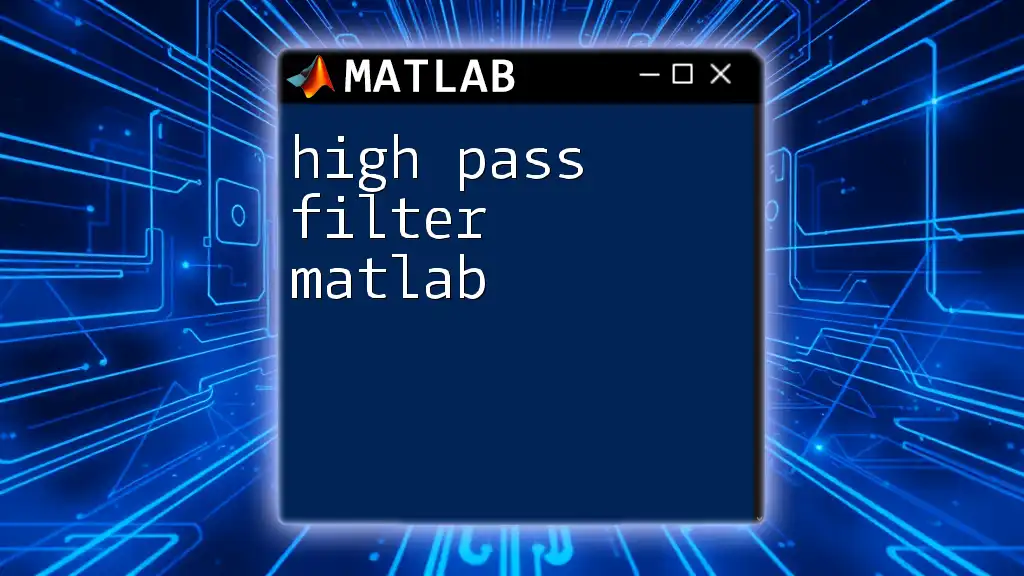
Designing a Bandpass Filter in MATLAB
Steps to Create a Bandpass Filter
Designing a bandpass filter in MATLAB involves several key steps, starting with defining the filter specifications.
Step 1: Define Filter Specifications
Before delving into coding, clearly define your filter parameters, which include:
- Sampling Frequency (fs): The rate at which the signal is sampled.
- Desired Range of Frequencies: Establish the low and high cutoff frequencies critical to your application.
Step 2: Choosing the Filter Type
Once the specifications are set, you need to decide on the type of filter—either IIR or FIR.
-
IIR Filter Design: This filter can achieve sharper transitions with fewer coefficients. However, it may introduce non-linear phase distortions. Here’s how you can implement an IIR bandpass filter in MATLAB:
[b, a] = butter(4, [low_cut high_cut]/(fs/2), 'bandpass'); -
FIR Filter Design: This design ensures stability and linear phase response, making it suitable for various applications. The trade-off here is the potential need for a higher filter order. Here's an example:
n = 20; % Filter order b = fir1(n, [low_cut high_cut]/(fs/2), 'bandpass');
Step 3: Visualizing the Filter Response
After designing the filter, it’s crucial to visualize its performance.
- Frequency Response Plot: Use `freqz` to display the frequency response of your filter:
freqz(b, a); title('Frequency Response of the Bandpass Filter');
Understanding how the frequency response aligns with your expectations is critical in confirming that the filter behaves as intended.
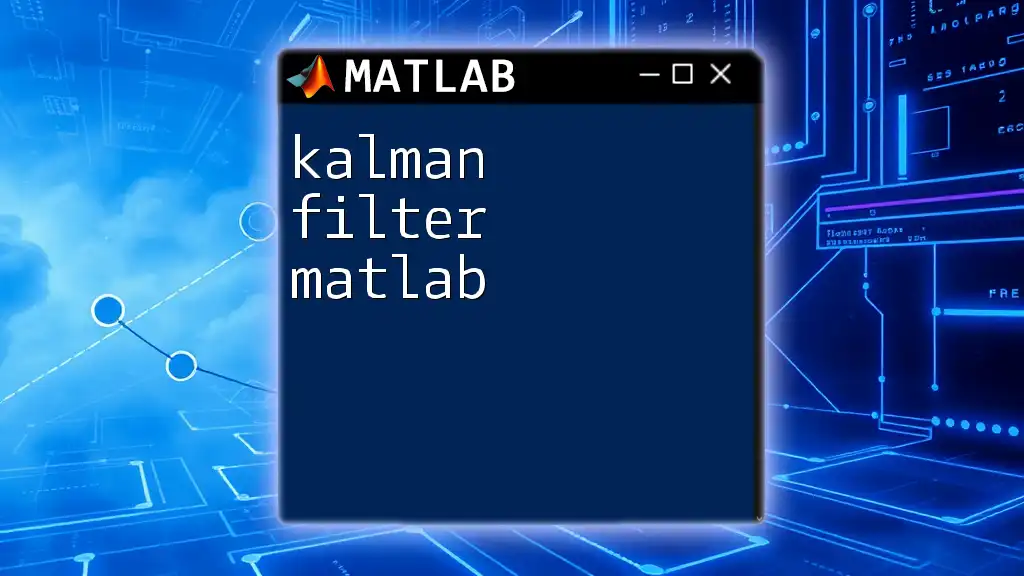
Implementing the Bandpass Filter
Once the design is confirmed, apply the filter to a real signal.
Step 4: Generate a Sample Signal
To see the effect of your filter, generate a sample signal. Here’s how:
t = 0:1/fs:1; % Time vector
x = sin(2*pi*50*t) + sin(2*pi*120*t); % Example signal
In this instance, the signal consists of two sine waves at different frequencies.
Step 5: Filter the Signal
Apply your bandpass filter to the generated signal:
y = filter(b, a, x);
This command processes the input signal `x` with your designed filter, allowing you to observe the filtering effect.
Step 6: Analyze Filtered Output
To evaluate the performance, analyze the filtered signal in the time domain:
figure;
plot(t, y);
title('Filtered Signal in Time Domain');
xlabel('Time (s)');
ylabel('Amplitude');
This visualization will help assess how well your bandpass filter has removed unwanted frequency components from the original signal.
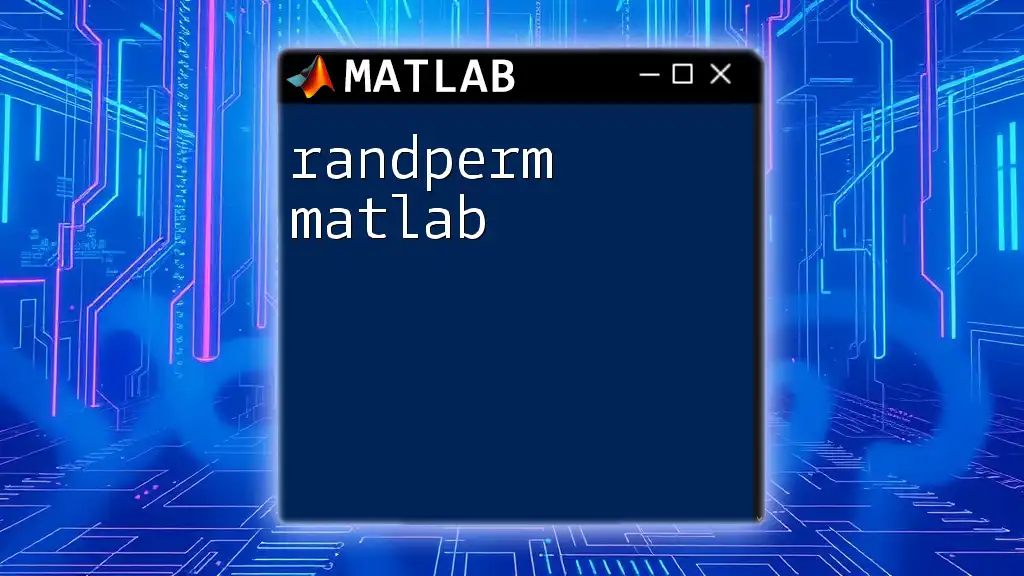
Troubleshooting Common Issues
Understanding Filter Artifacts
When working with filters, it is essential to understand potential artifacts and issues:
- Delay and Phase Shift: Filters inherently introduce a delay. Be cautious when timing is critical in your applications.
- Filter Performance: Assess stability and frequency response. If performance is not as expected, revisit the filter order and specifications.
Optimization Tips
Optimizing your filter design can yield better results:
- Filter Order vs. Performance: Reducing the filter order can simplify the design but might compromise performance. A balanced approach is necessary.
- Parameter Tuning for Better Results: Experimenting with cutoff frequencies and filter types can lead to enhanced effectiveness.

Additional Resources
For further exploration and learning:
- MATLAB Documentation Links: Familiarize yourself with MATLAB’s extensive documentation to deepen your understanding.
- Recommended Online Courses: Platforms like Coursera and edX offer courses on digital signal processing where you can find practical applications of bandpass filters.
Community Forums and Support
Engaging with the MATLAB community can provide insights and assistance:
- Participate in forums like MATLAB Central, where users discuss best practices, troubleshoot issues, and share tips.

Conclusion
This guide has traversed the fundamental concepts and practical applications of bandpass filters using MATLAB. Understanding the nuances of designing and implementing these filters is crucial for anyone interested in signal processing. Experiment with your designs and discover the potential of MATLAB as a powerful tool for creating effective bandpass filters.
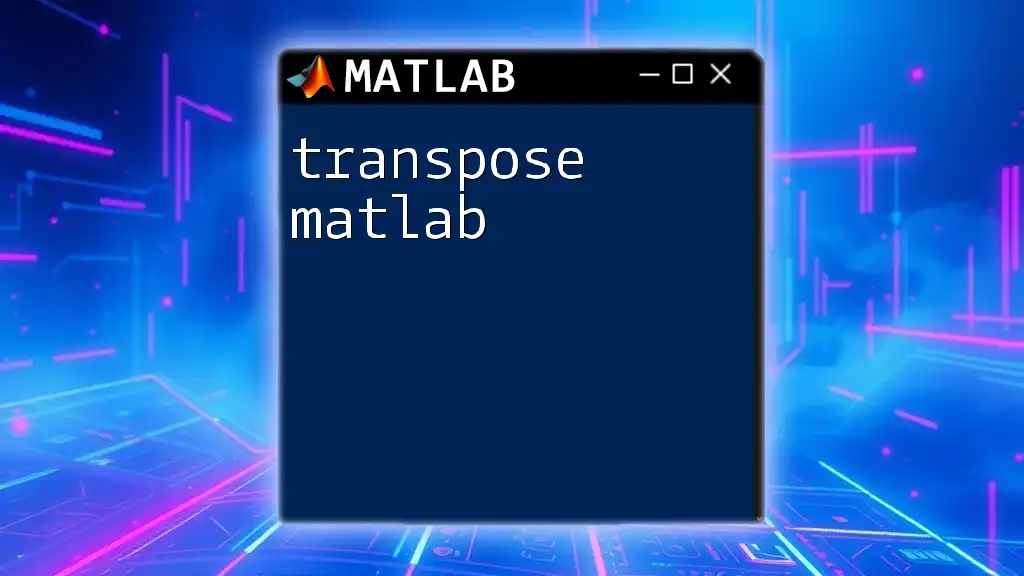
Frequently Asked Questions (FAQ)
What is the difference between IIR and FIR filters in MATLAB?
IIR filters are designed with feedback and can be more efficient than FIR filters in terms of filter order, while FIR filters are inherently stable with a linear phase response.
How do I choose my filter cutoff frequencies?
Choosing the right cutoff frequencies depends on the specific application; it generally involves knowing the frequency components of the signals you wish to retain versus those you want to remove.
Can I integrate the bandpass filter into a real-time system using MATLAB?
Yes, MATLAB supports real-time processing with tools like Simulink and MATLAB Coder, which can help translate your filter design into real-time applications.

